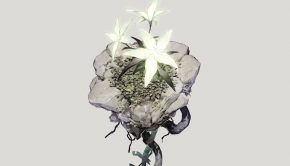Hiroki Kikuta Interview: Deep Reflections and a Promising Outlook
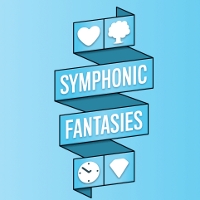 Following our meeting at Symphonic Fantasies, Hiroki Kikuta engaged in a detailed email-based interview with us, conducted by Justin Pfeiffer. He provides a fascinating recollection of his projects, ranging fromSecret of Mana to Tiara to his original conceptions, while offering an insight into his deeper philosophy about music, life, and expression. He also confirms his work on a future RPG.
Following our meeting at Symphonic Fantasies, Hiroki Kikuta engaged in a detailed email-based interview with us, conducted by Justin Pfeiffer. He provides a fascinating recollection of his projects, ranging fromSecret of Mana to Tiara to his original conceptions, while offering an insight into his deeper philosophy about music, life, and expression. He also confirms his work on a future RPG.
Hiroki Kikuta is widely recognised for his organic and spiritual score to Secret of Mana. After composing Seiken Densetsu 3 and Soukaigi, he left Square to become a game designer. He has since returned to the spotlight with works on five visual novel titles, a series of original albums, the MMORPG Concerto Gate, and even some non-musical projects.
Interview Credits
Interview Subject: Hiroki Kikuta
Interviewer: Chris Greening, Don Kotowski
Editor: Chris Greening
Translation & Localisation: Kanako Boecker, Justin Pfeiffer
Coordination: Thomas Boecker, Justin Pfeiffer
Interview Content
Foreword by Hiroki Kikuta: First of all, I would like to express my gratitude for such thoughtful, interesting questions. As the person responsible for the work, I’m very happy to have people interested in the various parts of my personal history. It also rekindles the memories I have of these affairs and I think this is an excellent opportunity to put my thoughts on record.
Chris: Symphonic Fantasies is a historic event, chronicling a rich history of series, including your own work on Secret of Mana. How did it feel to revisit the Secret of Mana soundtrack 16 years on?
Hiroki Kikuta: The game Seiken Densetsu 2 (Secret of Mana) and my work on its BGM are very important to me. I have many memories from it. This software was an action-RPG for the SNES released in 1993, but my work on it actually started over a year before then. During that time, Squaresoft’s main office was located in an area of Tokyo called Ebisu, and I more or less lived in that building, going home only twice a month. I did the entire development in those conditions. It may sound like a long time to compose over 50 tunes, including tiny jingles, but the majority of that time was spent on things like sampling the timbre of waves for the SNES PCM sound chip, adjusting the pan, volume, and effect of each of the 8 sound channels, and manually compressing the size of the sound data. It was a challenge focused on “how to effectively gain command of a limited piece of hardware.”
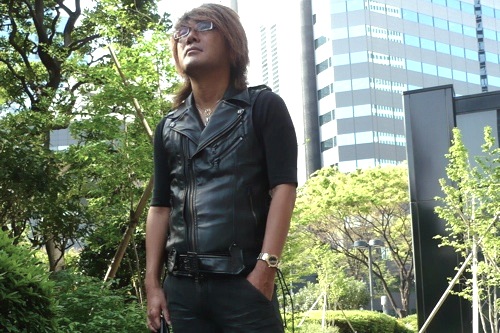
To tell you the truth, when Secret of Mana came out in the 1993, there was hardly any reception or evaluation of it. I was making game music, so naturally the most important thing was to have the user fully enjoy the game. Since this was my primary goal for the job, I had no worries about the music, even if it didn’t receive any appraisal. But about 10 years after the game was released, I gradually began to encounter more and more fans of Secret of Mana‘s music. When I think about it, at the time, the target age for SNES was mainly elementary school students to junior high school students. Supposing someone of that age played the game, and even liked the music, chances are they were too young to put their feelings into words and make a statement about it. Perhaps it simply required the circulation of the Internet and the amount of time it took for these people to become adults for the impressions they held toward Secret of Mana‘s music to reach me. But then, when I thought about it from a different angle, I realized it’s quite a wonderful thing. When I imagined the popular music market that exists outside of video games, I realized there isn’t much music that a large group of people continue liking over 10 years, and eventually make into an orchestral arranged concert 16 years later.
Game music, particularly the background music of RPGs, offers a special musical experience to the user. Ordinarily, when we buy a new CD, we don’t continually listen to it tens or twenties of times. We listen to it a few times, take it out of the CD player, and put it on the rack. However, from the moment we put a game cartridge into a SNES, we end up listening to the game’s BGM eternally, sometimes up to 50 hours or more. This is a unique experience, like no other. Not to mention that there’s a beautiful ending awaiting us at the end of that 50 hours that touches the heart. It’s the sparkle in the eye of those who, after 16 years, passionately tell the story of Secret of Mana, that demonstrates the fact that these individuals were impacted by this game in their most sensitive of teenage years, more than we could ever imagine. During the actual development of the game, I wanted it to be great and devoted myself 24 hours a day to working on it. I never imagined a day like this would come. Yet, I am truly happy that my efforts have been instilled in the hearts of the players as memories. I truly feel that it gave them a helping hand through life.
Chris: What is your verdict on Jonne Valtonen’s experimental arrangement of Secret of Mana‘s soundtrack for the concert?
Hiroki Kikuta: I wasn’t sure who Jonne Valtonen was, due to my limited information, but I heard he carried a great number of achievements in game music production and orchestration. Perhaps this influenced my opinion, but I felt that his interpretation, compared to conventional orchestral arrangements, placed an overwhelmingly greater value on the game’s world and concept. To put it a different way, his arrangement defied the framework of regular orchestra and was a very experimental attempt. But, “games,” as we know them, are in essence “playing.” Given the most important property of this notion is, “not being afraid of failure” and “free and unbound expression,” I’d say that Jonne Valtonen’s production approach was truly correct.
Of course, when I first heard the arrangement at the rehearsal, I was a little worried that the performance would be difficult since it was so complex and demanding. But, I am truly grateful that the WDR Orchestra laid my worries to rest with one week of practice and left behind a remarkable performance in Symphony Hall on September 12th. It could not have been done with a limited time and budget. I was quite surprised by the whole thing.
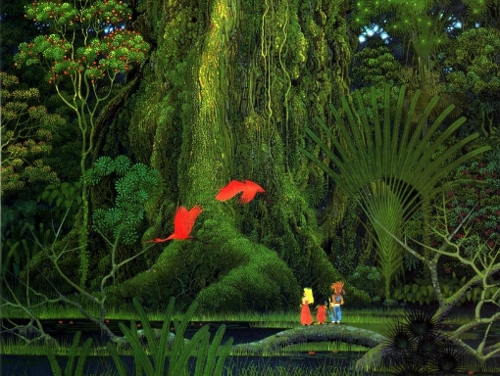
Chris: This isn’t the first time Secret of Mana has received an experimental treatment. My favorite production of yours remains Secret of Mana +. What were your visual and musical inspirations for this project?
Hiroki Kikuta: Secret of Mana + is a project that I have many memories of as well. The album production process itself played out something like a drama in my mind. In fact, I’ll take the opportunity to recite the details of that here. I have something of a prose poem, which summarizes the words and images reverberating in my mind as I worked on this project. Here it is.
Spirit. Or perhaps a spoken truth.
Light shall never dwell in those eyes again.
Darkness. The two faces of darkness.
Catastrophe and blessing wrought by earth.
The Lord loses his power,
And degrades from pity.
Unspeakable urge and suspicion.
Even if it was something fatal.
Fear the angels.
For the joy of frolicking with angels. Is sin.
An irregular Sun.
Double layers.
Smile and whisper.
People who receive forgiveness.
The anticipation.
A wicked stir is made in the crowd.
To satisfy her mouth with sweet fear.
There is no end to the sorrow.
The deceased.
Existence that transcends night.
Three footsteps traverse the path.
Delight and stillness.
Intelligence that solves the riddle of soul.
And, a secret.
There is no beginning to love.
Like you, and me.
To briefly sum up my work on Secret of Mana +, it felt something like, “sprinting in the middle of the darkness of night, holding the secret in hand.” I felt the pressure, a sense of crisis, to create an entire 50-minute CD of MIDI data from nothing in two weeks, along with the pleasure of being liberated from all the limitations put on me when I compose music for video games. This paradoxal mix of emotions stirred various inspirations within me. The concept of the album being one 50-minute track was something I had decided from the start. But it was surprisingly difficult putting all the melodies together, any way I saw fit, while utilizing everything in my musical drawer, from A to Z. I think this album had the power to change the life of the human listener precisely because of the mental strain I endured putting and expressing everything I had into this project.
Chris: Would you agree that the Secret of Mana + album was pioneering for its time?
Hiroki Kikuta: So-called “Avant-garde” or “pioneer” works don’t just come out of no where. They definitely come from the influence and respect toward artists and their works of the past. Secret of Mana +, too, was influenced by the great works of artists like Mike Oldfield, The Orb, Prince, and Pink Floyd. They, too, were likely influenced by a number of great musical works from their past. What’s important is whether or not the person’s lifestyle and experiences as a human are fully utilized in the work. It brings the work to life and results in the power to move the heart of another. This may sound obvious, but the work of a mediocre human being will be mediocre. If a person can manage to never forget the challenges in life, be ready to take risks and jump into new places, and lead a pioneering lifestyle through the changes in time, then no doubt, that person’s work will have a flash of novelty that is worthy of the title, “pioneer.” If that is something I’m able to achieve, then I’d be very pleased. But personally, I have no idea if that’s so.
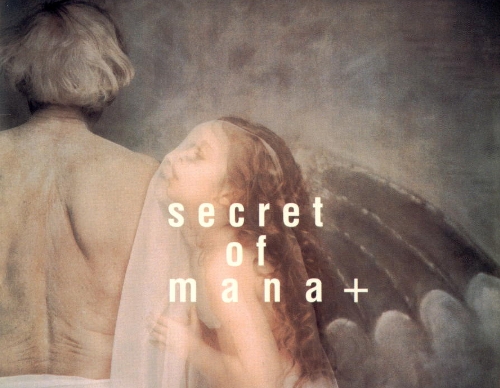
Chris: While you’re best known in the West for Secret of Mana, many game music fans regard Seiken Densetsu 3 and Soukaigi to be your most revolutionary scores. How do you feel these scores compare to Secret of Mana?
Hiroki Kikuta: First of all, when comparing the work of Seiken Densetsu 2, Seiken Densetsu 3, andSoukaigi, what I want people to have in their mind is that each one of them was composed with a different concept. “Game music” is something made with the constant limitations of hardware, while bearing in mind the aim of the musical direction. As such, it wouldn’t make sense to compare its music without consideration of the game portion. No matter what genre of game music I do, budget and amount of time permitted, I always devote all my power, seeking the highest results. Therefore, I’m able to have the same amount of confidence in all of my pieces and take pride in having the players listen to my music.
Given this notion, were I to compare them, I would say: My challenge with Seiken Densetsu 2 was “the limit of game music made on 8 channel SNES sound chip.” My challenge with Seiken Densetsu 3 was “the limit of game music made on 6 channel SNES sound chip.” And my challenge with Soukaigi was, “the limit of game music made from live recording with Japanese stage musicians.” I believe that I attained the solution to each of them and my challenges were a success.
Chris: Do you regret these that your latest Square projects didn’t receive more Western attention?
Hiroki Kikuta: Since game music is indivisible from the game itself, it’s natural for the popularity and sales of a game to affect the standing of the music. For starters, neither Seiken Densetsu 3 norSoukaigi were officially released in the West. Plus, Soukaigi had difficult gameplay for an action game. Therefore, it can’t be helped that neither of them was very popular in the West compared to Seiken Densetsu 2. Of course, I do consider it a shame.
Chris: Since leaving Square, you have worked on the MMORPGs Concerto Gate and Cho-Bukyo Taisen. On these projects, did you work directly with Square Enix or were you working on behalf of an external development? What was it like to work on Square-related projects after so long?
Hiroki Kikuta: Cho-Bukyo Taisen became a reality from me bringing in the plan to Enix. I designed the core system and performed all of the work in Japan. This was an online game with extremely novel specifications, incorporating player-versus-player battle, while being an MMORPG, which we anticipated for the markets in China and Taiwan early on. It was finished, implemented in Taiwan through a closed beta, and received good feedback. But alas, due to all sorts of circumstances, the operation was halted. At that time, no one had any thoughts about Square and Enix merging. But one day, that suddenly became a reality, and sometimes various plans and projects are affected when big companies like this merge together.
Concerto Gate, on the other hand, happened while I was helping out in the management department at my friend’s company, Ponsbic. Coincidentally, a colleague of mine, Mr. Kenji Ito, from when I was enrolled at Square, happened to be in charge of the music of the current MMORPG they were working on. Evidently he was too busy to complete the soundtrack, so I supplemented it with my compositions. Unfortunately, this project had almost nothing to do with Square Enix. But, it was a strange, deep feeling collaborating with an old friend (Squaresoft).
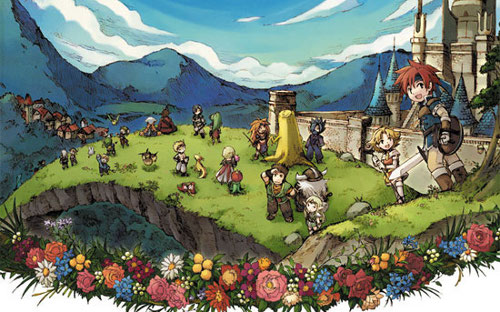
Chris: There is some confusion over the source material of Alphabet Planet with some describing it as a completely original album and others a re-imagined game soundtrack, possibly for Cho-Bukyo Taisen. Could you clear up where the source material came from? Did you compose this album to partly cater for fans of your Mana style?
Hiroki Kikuta: The music from alphabet planet originally came from an order by a company called Shoeisha to do the music for an online game. When I first heard about it, the game sounded like it had a very interesting world with interesting characters. But there were circumstances regarding management reorganization at Shoeisha and the plan for the game fell into a state of flux. Despite the work on it being basically finished, it disappeared due to unjust neglect on the part of the management. I wasn’t going to let the months I spent working on the music go to waste, so I decided to publish it under my own company label as “alphabet planet.”
The original game was cute with pastel colored images, so I intentionally went for a fun, lighthearted atmosphere with the BGM, without any grandiose sound source. Even more so, the staff member who gave me the order at Shoeisha was a big fan of Seiken Densetsu 2, and no doubt my talks with the guy about the game’s sound design influenced the entirety of the feel that I chose for the game. So undoubtedly, I had “Mana” fans in mind when I made this project, and yes, you could say it was for the purpose of Mana fans.
Chris: In addition to original albums, you have composed music for several visual novels, namely Sora no Iro, Mizu no Iro, Ni~dzuma wa Sailor Fuku, Sakura Relaxation, and Moe-Nikki. How did you come to work with Ciel and Puzzlebox on these projects?
Hiroki Kikuta: The opportunity came while I was doing a job writing game scenarios for the consumer market though the introduction of a friend at a subcontracting development company called Paon. There, I happened to become acquainted with one of the main staff members at Ciel. In order to find a good job, it’s very important to encounter good people. I’ve been helped out by encounters like this many times.
Each title had its own concept. The theme of Sora no Iro, Mizu no Iro is “The sweltering heat of summer days and the coldness of water (something sensual).” The theme of Sakura Relaxation is “A warm family and a secret hidden from daily life (something psychological).” The theme of Ni~dzuma wa Sailor Fuku is “A precarious life and the strong affection that supports it (something lyrical).” The theme of Moe-Nikki is, “A school in the 1970’s and a music room with nobody in it (something scenic).”
If most people empathized with the music of Sakura Relaxation, it’s probably because of all the pop fashion in the game, along with its gentle atmosphere and positive image towards family, friends and life, idiomizing the style of Seiken Densetsu 2 and Seiken Densetsu 3. With the music, I tried as much I could to vividly express the state of the character Randy, who mustered up the courage to continue his adventure with his companion, despite being banished from the village he was born. And others like Charlotte and Reese, who ran bravely about the field and matured through their encounter with battle, despite the immense agony they bore. But my approach towards work, even with Sakura Relaxation, is always the same.
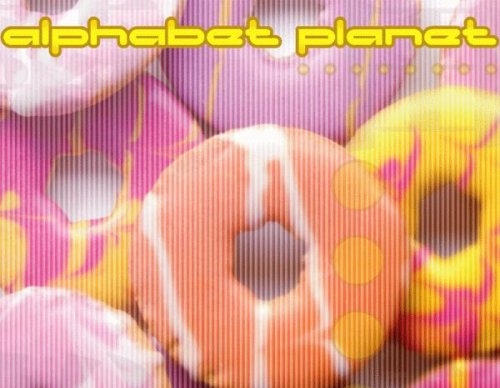
Chris: What do you mean by this approach?
Hiroki Kikuta: Hm, how can I put it. First, when making a (musical) expression, the approach is to always convey something precise from your own experiences and feeling. The thought of expressing a set of images and words borrowed from elsewhere, that you, yourself do not even know, is something that doesn’t settle well with me. This ties into the importance of originality. That, and an approach with a positive view of human beings, the world, and living things. I’ve seen so much despair in the reality we live in that I”m fed up with it — we don’t need any more. My hope is to make projects that give the user the power live each day and cheer them up a little. That’s how I’ve thought in the past, and that’s how I think now.
Chris: While most people seem to like Sakura Relaxation‘s music the most, what is your favorite of these scores and why?
Hiroki Kikuta: All of my works are equally important to me, but if I had to say which one I liked the best (out of these four), I would answer with Ni~dzuma wa Sailor Fuku. The reason being it’s the one I was able to compose most freely as I saw fit. It was a remarkable challenge seeing how far I could overstep the boundaries of traditional adventure game BGM while still satisfying the requirements of being game music. As a result, it received feedback saying that the BGM wasn’t adventure game-like at all. But, for a person like me, who values the idea of constantly aiming for new horizons, this was a compliment.
Chris: Your latest game soundtrack is Symphony Soft’s Tiara. What sort of music should we expect from the project?
Hiroki Kikuta: In Tiara‘s music, my aim is to create small, cute, gem-like sparkling themes, while under-toning the grace of classical music. As for the melodies, almost all of the composition in Tiara is linked to the character themes. I think anyone who likes pretty music with lots of glockenspiel and marimba will enjoy it. It’s the result of my effort to more profoundly express the human-like charm of these characters’ personalities and weak points through the use of musical technique.
Chris: Can we expect album releases of the Tiara and Moe-Nikki through your Norstrilia record label in the future?
Hiroki Kikuta: I have plans to release both Tiara and Moe-Nikki on CD through Norstrilia. I’m thinking about recording an English version of the opening theme to Tiara and including it on the CD. I also have many rejected versions of songs from Moe-Nikki, both vocal and instrumental, due to the many retakes we did at the will of the director. So right now I’m not quite sure how to organize the album.
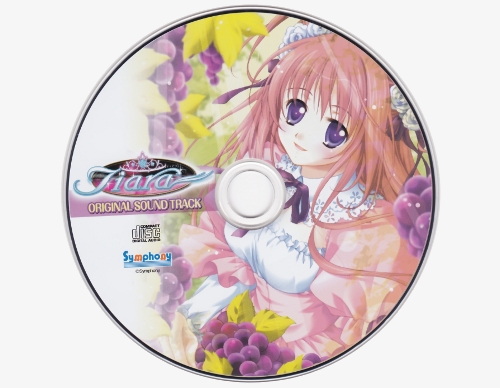
Chris: Speaking of your record label, you have produced the concept mini-albums Kaijinki, Tennin-Sou Kitan, and AT in recent years. Western fans are interested to learn what stories these albums tell and what inspired them. Could you say a little about them?
Hiroki Kikuta: Sure. First of all, I suppose you could think of Kaijinki as a practice work for the production of Concerto Gate‘s BGM. It may not be a clear-cut concept, but there aren’t many ocean-themed fantasies out there, so I figured I’d try my hand at one. Serving dually as orchestration practice, the aim of my structure was to have the listener feel the rough expression of the northern seas, as well as the ebb and flow of the tide. I hope it was accurately conveyed to the listener.
“Tennin-Sou Kitan” (“The Mysterious Story of the Leucoscepturum japonicum Plant”) has compositions related to the “Tenrei-Tou Kitan” (“The Mysterious Story of the Island of Souls”) music compiled on the CD Lost Files. Truth be told, the idea was originally for a series of mystery novels, not music. I had a spur to write a Taisho Era romantic mystery involving two characters. One, a curious young girl, based on the school girl days of Madame Umeko Mishima, who was born in the Meiji Era and supported the shingeki (new theater) movement of Japan, and a mystery-loving amateur detective, based on physicist Torahiko Terada. These two pieces of work took the form of music before writing while I was still in the midst of gathering materials and searching for images for the project. There is a third volume called “Tengen-Byou Kitan” (“The Mysterious Story of the Clairvoyance Disease”), making the series a trilogy, which contains a murder plot twist, architectural plot twist, and deceptive plot twist, in that order. The outline of the story is established, but I just can’t find the time to actually write it. So it’s been left as is. Personally, I am a bit regretful of this.
“Kasei Kara Kita Onna” (“Girl From Mars”) is my personal proposal, or attempt, as a person with a penchant for “big beat” music (as it’s called in the West) or “digital rock” (as it’s called in Japan), to revive this origin of music. I had in mind the sound technique used by DEVO during the time “Duty to the Future” was released. Simultaneously, it’s an alarm bell towards the meaninglessness in further subdividing the techno music genre, as well as the silliness in people making countless rules in trying to establish an identity. What I feel is important is thinking not about the initial bounds of the framework, but rather fully bringing out the appeal of the materials. I’m not reaching for three random elements here, but if I were to answer the question, how do the three elements — female vocal, lyrical melody, and technology — combine, I would answer with this CD.
Lastly, my latest work “AT” is also based on a different concept compared to my previous works. The most striking characteristic of this is the existence of vocaloids. Vocaloids are precisely the epitome of euphorically fusing female vocals and technology — a truly innovative form of art. However, my skill at vocaloids is quite undeveloped. This “bonding of human and non-human” field of music, something truly unique to the 21st century, has been more or less perfected by Yasutaka Tanaka’s approach, who uses material from Perfume. Compared to his work, my attempts to search the possibilities of vocaloids may sound meager, but I can’t help but feel I can show yet a different perspective through my faith in new techniques developed.
Chris: Can you further elaborate on this idea of genre subdivision and identity?
Hiroki Kikuta: I’m talking about people who try to “tell music”. Or people who try to “tell music through a genre” or “framework.” People often fall into the trap of labeling things, making categories and genres, and organizing them together for the purpose of their argument, then think they’ve told something. In reality, music is an extremely fascinating, wordless form of communication, which I don’t believe needs to be intentionally wrapped in words. In short, I feel it’s most important to play music faithfully to the images that naturally gush forth from the heart.
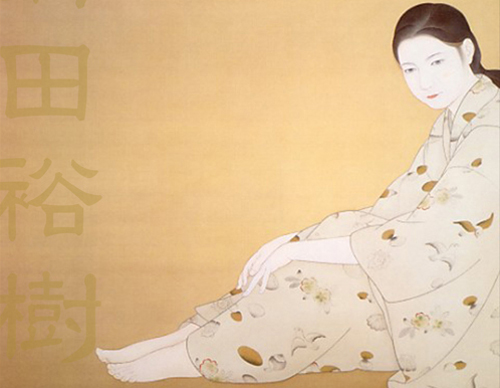
Chris: In recent years, hardware limitations have diminished greatly allowing game composers to compose more freely. How do you feel technological liberation has influenced your music and the industry as a whole? After projects such as Soukaigi, why did you choose to revert to synthetic music on your more recent game projects?
Hiroki Kikuta: The quality of game hardware has definitely improved, but that doesn’t mean our jobs as composers have become any easier, nor does it mean the quality of music has necessarily increased. It’s like comparing an ink painting, painted all in black, with an oil painting, painted colorfully with many different paint tools. The important thing is fully understanding the conditions you’ve been placed in, the limitations that exist therein, and how to effectively gain a good command of the freedom you’ve been given. To put it a different way, it can be a disadvantageous situation for someone without the ability to instantly discern what’s necessary and what’s unnecessary when the degree of freedom increases and the scope of choice broadens.
With Soukaigi, I constructed the music by employing the services of a large group of studio musicians and live recording, but that doesn’t mean the worth of live performance is greater than using a computer to input performance. I figured live performance would be the optimum way to compensate for the PlayStation’s low graphic ability and screen expression through rough polygons. Also, it was easy to get Squaresoft’s permission for that approach given their economic condition at the time. If the conditions of the musical direction and economic circumstance agree, I would probably always choose to employ the live performance of studio musicians and create a substantial performance by orchestra. What’s important is finding the best way to match the conditions of the project to the purpose.
Chris: You recently surprised fans by appearing on the DoDonPachi Dai-Ou-Jou Arrange Album. How did you become involved with this project and what inspired your arrangement approach?
Hiroki Kikuta: That is straightforward. A boy who played Seiken Densetsu 2 and was impacted by it in his middle school days became a producer for Cave 16 years later, and suddenly dropped me an email asking if I wanted to participate the DoDonPachi Dai-Ou-Jou Arrange Album. I happily accepted. It sounded interesting.
As I mentioned to the original song-writer, Mr. Manabu Namiki, the completely 5-note pentatonic aspect of the melody and its vertical motion made it impossible to simply apply any chord interpretation or sub-melody — in other words, any general arrangement. Accordingly, I didn’t touch the structure of the melody, but instead attempted a relative direction, thereby designing sounds of atmosphere and presence to exist as background scenery. To put it more concretely, I referred to a synthesizer band that was active in the 1970’s called Tangerine Dream, particularly the presence effect in their song “Ricochet,” then constructed this arrangement. The approach of trying to capture a sense of existence that crosses the periods of time, by appropriately and carefully balancing a mix of new and old, is a technique I’ve been fond of lately and have been using.
Chris: Now that Symphonic Fantasies has been a great success, what dreams do you have for your music in the future? Would you one day consider scoring another major RPG project or do you have other plans?
Hiroki Kikuta: Firstly, with the success of Symphonic Fantasies as a stepping stone, I hope to develop bigger and better projects on every occasion. The fact that this “old school” music of the SNES era is so furiously sought after in this era we call “now” is something I want more and more people to know about.
I mention this all the time, but I love musicals. My dream is to direct, compose, and comprehensively produce a musical on stage. Also, as fate would have it, I’m set to work on the music composition of an upcoming RPG from a certain company, starting this fall. News of it will come about in some shape or form next year, so please stayed tuned. Aside from music, I want to write a light novel coinciding with a game project. Everything is already complete, including the work setting, material gathering, story and organization. All that’s left is to begin writing.
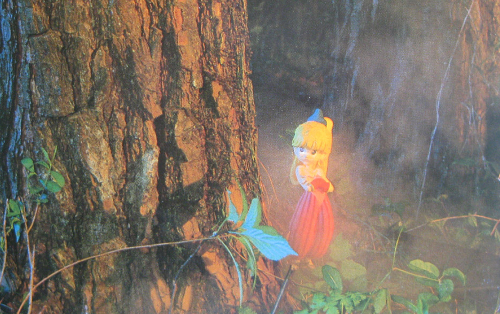
Chris: Thank you so much for your time with us today, Kikuta-san. Is there anything you would like to say to your fans around the world?
Hiroki Kikuta: Thank you very much, it was my pleasure. I truly got the sense that I have fans all over the world by participating in Symphonic Fantasies. I’m looking forward to the day we can meet again, somewhere in the world.
Many thanks to Justin Pfeiffer for coordinating and translating the interview so passionately and meticulously. Thanks also to Marcel, Andreas, and Don for their question suggestions, Thomas Boecker and Kanako Boecker for their help in the initial meeting with Hiroki Kikuta, and, of course, Hiroki Kikuta himself for giving such fascinating responses.
Posted on November 1, 2009 by Chris Greening. Last modified on March 1, 2014.



